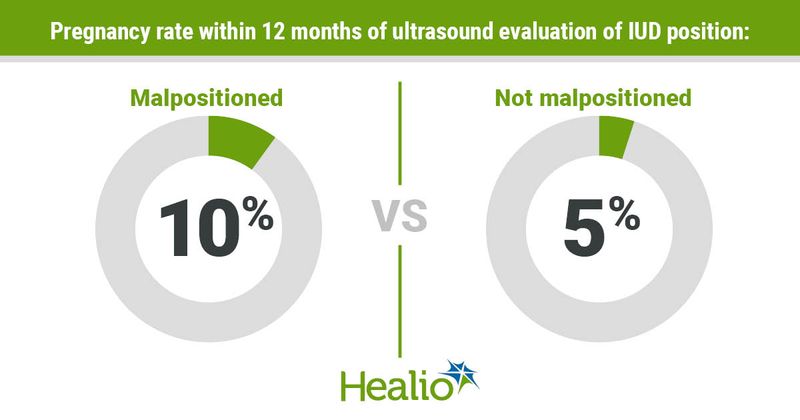Pregnancy within 12 months of ultrasound ascertainment more common with malpositioned IUD
SAN DIEGO — Patients with a malpositioned IUD had a higher risk for pregnancy within 12 months of ultrasound IUD ascertainment compared with patients with properly positioned IUDs, according to data presented here.
However, the increased risk was not due to higher rates of pregnancy with an IUD in place, researchers said. Rather, it was related to the low IUD usage rate among patients with malpositioned IUDs.

“One hypothesis was maybe [with] the malpositioned IUDs, people are more likely to get pregnant because they don’t work as well because they’re not in the right spot, but from the data that we have, it seems to be more because people aren’t using their IUDs afterward,” Ann Frisse, MD, a fellow in complex family planning at Icahn School of Medicine at Mount Sinai in New York City, told Healio.
Frisse and colleagues retrospectively examined the incidence of pregnancy among 1,759 IUD users within 12 months of an ultrasound performed between July 2014 and July 2017 within a large, urban academic medical system.
Of 436 (25%) malpositioned IUDs, 150 (34%) were embedded and 16 (4%) were perforated.
Overall, patients with malpositioned IUDs were more likely to experience pregnancy within 12 months compared with those with properly positioned IUDs (10% vs. 5%; P = .002). However, there were no statistically significant differences between malpositioned and properly positioned IUDs for pregnancy rates with IUD in situ, after removal or after expulsion.
Analysis also revealed that IUD use was significantly lower among patients with malpositioned IUDs compared with those with properly positioned IUDs at 3 months (51.5% vs. 82.9%), 6 months (46% vs. 77.8%) and 12 months (40.2% vs. 70.2%).
“A limitation to [our findings] — beyond it being a retrospective chart review, which comes with its own limitations — is the definition of IUD malposition,” Frisse said. “There is no standardized definition for what makes an IUD malpositioned ... We had to define IUD malposition based off of whatever the radiologist or gynecologist who read the ultrasound report decided to call it.”
In addition to creating standardized terminology for IUD malposition, Frisse suggested future studies examine risk factors for IUD malposition to improve contraception counseling.

